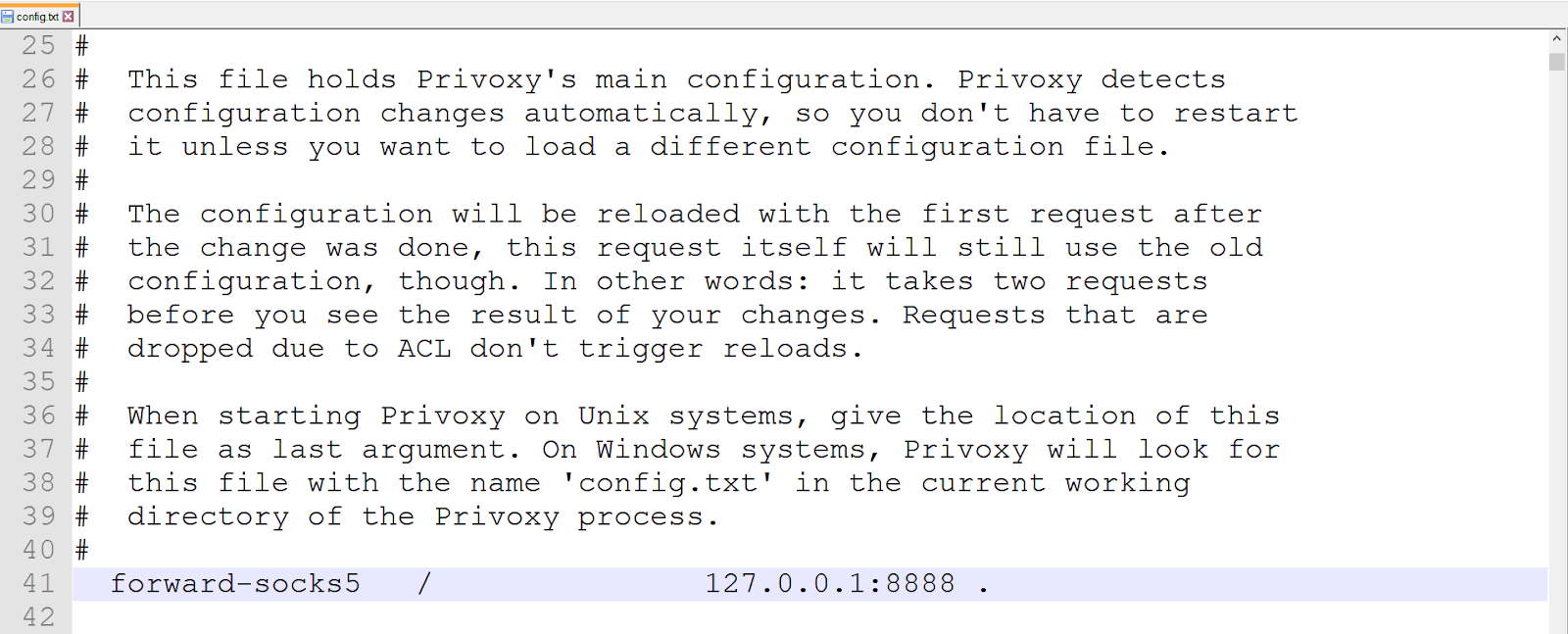
Webrtc Disable Chrome

How to Disable WebRTC in Chrome and Other Browsers
Updated on July 13, 2021: From now on, traffic filtering, malware protection, and suspicious DNS activity blocking are available as a part of the separate DNS Firewall app. Enabling a VPN to enjoy completely private and secure web surfing? You definitely go private this way. However, there’s a caveat. If your browser’s WebRTC technology is on, your IP address may be leaking regardless of your VPN. But no worries! Check out our article and learn what it is, how to disable WebRTC in your browser, and make sure you’re completely anonymous online.
What is WebRTC technology
WebRTC vulnerability
How to detect WebRTC leak
How to prevent WebRTC leak
Disable WebRTC leak using KeepSolid VPN Unlimited extension
Turn off WebRTC in your browser
How to disable WebRTC in Chrome
How to disable WebRTC in Opera
How to disable WebRTC in Firefox
How to disable WebRTC in Safari
How to disable WebRTC in Microsoft Edge
Final words on how to stay completely private online
Get guaranteed protection from WebRTC leaks with KeepSolid VPN Unlimited What is WebRTC Technology
WebRTC stands for Web Real-Time Communication. It is an open-source tool that allows direct P2P communication inside a webpage, thus eliminating the need to install additional plugins or programs. As an example, with WebRTC, you can have video conferences on web browsers without any intermediaries.
The audio and video communications conducted with the help of WebRTC are of the highest quality. What’s more, the WebRTC technology for P2P file-sharing and communication uses less bandwidth and has low latency.
WebRTC is quite useful, no doubt, as this technology considerably improves browser-to-browser communication. However, it doesn’t come without drawbacks.
Even if you’re using a VPN, WebRTC can put your online privacy at risk by revealing your real IP address. Many users are not even aware that WebRTC is on, as it’s enabled by default in many browsers, including Chrome, Opera, and Firefox.
This vulnerability poses great threat to VPN users who are concerned about their online privacy and wouldn’t want their real IP address to be exposed in any way.
How to Detect a WebRTC Leak
To check whether your IP address is being leaked via WebRTC, connect to a VPN server and run WebRTC leak test. As stated in Your IP addresses – WebRTC detection section of the website, if you’re connected to a VPN, and still can see your ISP’s IP, then your system is leaking WebRTC requests.
Conversely, if you can only see the IP address of the chosen VPN server your web surfing is private and secured
How to Prevent WebRTC Leak
There are several ways to avoid your IP address being leaked via WebRTC. The simplest one is to use a reliable VPN that blocks WebRTC leaks, like KeepSolid VPN Unlimited. The VPN service by KeepSolid securely encrypts internet traffic and protects your real IP address and all sensitive data.
The KeepSolid VPN Unlimited extension provides an easy way to disable WebRTC protocol in your browser, letting you enjoy the highest anonymity and privacy possible.
Disable WebRTC Leak Using KeepSolid VPN Unlimited Extension
The built-in feature that blocks WebRTC leaks in the KeepSolid VPN Unlimited extension is quite easy to use. Follow these simple steps:
Open the VPN add-on by KeepSolid and log in.
Navigate to the menu by clicking the icon at the top left corner.
Enable the WebRTC Leak Prevent feature in case it was turned off.
Turn off WebRTC in Your Browser
Another way to avoid WebRTC leaks is to disable WebRTC requests in your browser. This process is a bit more complicated, and the instructions will vary depending on your browser.
Unfortunately, Google Chrome doesn’t have any built-in settings to let its users disable WebRTC leaks. Therefore, you’ll need to install a special extension from Chrome Store for this, like WebRTC Leak Prevent, WebRTC Control, or Easy WebRTC Block.
The process is similar to adding any other extension to your Google Chrome browser:
Open the Chrome Web Store and search for the required extension: WebRTC Leak Prevent, WebRTC Control, or Easy WebRTC Block.
Click Add to Chrome and confirm installation by pressing Add extension.
Activate the extension and it’ll disable WebRTC in your Chrome browser.
Get started with the VPN Unlimited extension and improve your online privacy with no hassle! How to disable WebRTC in Opera
Similar to Chrome, Opera browser requires a special add-on for disabling WebRTC:
Open Opera Add-ons page and search for either of these extensions: WebRTC Leak Prevent, WebRTC Control, or Easy WebRTC Block.
Click on the necessary add-on and press Add to Opera.
Activate the add-on to disable WebRTC in your Opera browser.
If you’re a Firefox user, no need to install a third-party extension. Disable WebRTC directly in your browser’s settings:
In the address bar or your Mozilla Firefox browser, type about:config and press Enter.
Click I accept the risk! on the warning screen that shows up.
Type erconnection. enabled in the search bar beneath the address bar.
Double-click the search result to change the Value column to false.
Click the Safari menu and navigate to Preferences in the drop-down menu.
Proceed to the Advanced tab and check the box that reads Show Develop menu in menu bar.
Find the Develop tab in the menu bar and navigate to the WebRTC option in the drop-down menu. In case Enable Legacy WebRTC API is checked, click it to disable it.
Microsoft Edge does not allow to disable WebRTC completely. However, its settings let you stop it from revealing your local IP address. Here are steps to follow:
Type about:flags in the address bar and press Enter.
Check the box in front of Hide my local IP over WebRTC connections.
Restart your browser for the changes to take effect.
Final Words on How to Stay Completely Private Online
Despite the benefits the WebRTC technology brings to the table, it is recommended to disable this functionality in your browser so as not put your online privacy at risk. Follow the simple instructions above to disable WebRTC in your browser, connect to KeepSolid VPN Unlimited servers, and surf the web privately and securely with us! Ready to give VPN Unlimited a try? Our reliable VPN client is at your disposal to provide you with complete data security and online freedom.

How to disable WebRTC in Chrome, Firefox, Safari, Opera …
You might have heard about WebRTC leak and ways to prevent it. WebRTC is often talked about on VPN websites. What exactly is WebRTC and what’s the havoc it causes? WebRTC is a technology that allows your browser to have video and voice communication abilities. It might seem like an annoyance when you think about the leaks it causes, but it’s actually a great you use Google Meet to hold a video conference, you’re using WebRTC. The same is with the Facebook Messenger video call. There are other applications that make use of WebRTC. For example, if you’re on Discord, you use WebRTC. Basically, if you’re voice or video calling on your browser, you’re using WebRTC. Without this feature, your browser will be severely limited in its abilities. And with this feature, you don’t need any extra plugins for voice and video major browsers (Mozilla Firefox, Google Chrome, MS Edge, Apple Safari, Opera, etc. ) come with WebRTC capabilities. In fact, it is used in many mobile apps as well. It is a completely free technology and is open source. Since it is open source, it is improving and evolving to offer better enables live communications in real time. Now, what is WebRTC leak? WebRTC works by sending audio/video feeds between two entities. For this, it established communication channels from the browser to the website you open. This means your browser will share some of your information with the website, which will include your IP address. And these channels can bypass the encrypted tunnel you have setup. So basically, a WebRTC leak can reveal your real IP address even if you are using a agine this scenario: You’re using a VPN and want to have a voice call with someone so you need to use WebRTC. But it will leak some data so your real IP will get shown on the website side. This beats the entire purpose of using a VPN. A channel that bypassed the tunnel you’ve created – it’s to know about a WebRTC leak? To see if your IP is leaked, just connect to a server and run a leak test. If you see your real IP on the website, your IP is being leaked. But if you can see the IP address of the VPN server, you’re safe and your browsing is to do if your WebRTC is leaking your details? The good thing is that WebRTC leaks can be ’s how you can block the WebRTC leakThere are many ways to block the WebRTC leak. One way is by getting a VPN that doesn’t allow these leaks. These VPNs will let WebRTC work but only through the encrypted tunnel. Another option is to block the WebRTC requests directly from the browser. You can also use browser extensions if you cannot disable WebRTC. Keep in mind that if you disable WebRTC, you won’t be able to enjoy the functionalities that come with it. Disabling WebRTC in ChromeYou cannot disable WebRTC in Chrome. The only thing you can do is use add-ons. A good Chrome add-on is WebRTC Leak Prevent which is fast and powerful. It controls the hidden WebRTC settings and protects you against the leaks. Of course, when you use this, you won’t be able to use a WebRTC based service. Disabling WebRTC in Chrome mobile1. Type this URL chromeflags/#disable-webrtc in your Android Chrome address bar. It will open a settings page. 2. Scroll down and you’ll find WebRTC STUN origin header. You can disable it here. 3. You can even disable WebRTC hardware video encoding and decoding options if you want. Disabling WebRTC in Mozilla Firefox1. Go to the URL bar, type about:config and press enter2. Firefox will display a warning message. Click on I accept. 3. It will take you to another page. In the Search bar, type erconnection. enabled4. Double click on the row and change its value to falseNow WebRTC will be disabled on the browser. Disabling WebRTC in OperaOpera doesn’t have a way to disable WebRTC so you can use third-party addons like WebRTC Leak Prevent just like you did with Chrome. Keep in mind that these extensions do not fix the leak. Instead, they block the attempts the websites make to collect IP even if you use these extensions, the website might be able to get your data through cookies. However, if you use a safe browser like Kingpin that deletes cookies after each session closes, your data will be safe and you won’t be tracked by website trackers. Disabling WebRTC on Safari browser1. On Safari, visit Preferences3. In the Develop section, go to Experimental Features Remove Legacy WebRTC API”>4. Click on Remove Legacy WebRTC APIDisabling WebRTC on Microsoft EdgeYou’ll find WebRTC and ORTC (Microsoft’s proprietary version of WebRTC) on Edge. While you cannot disable it on Edge, you can certainly hide your real IP address. Here’s how you can do it. 1. Visit MS Edge and type about:flags in the address bar. Press enter. 2. You’ll see WebRTC here. Under that, there’s an option to hide your real IP address. Check the box to activate it work if you install VPN on the router instead of the browser? You might think WebRTC leaks happen because you’re using a VPN plugin on your browser. But that’s not true. Even if you use a VPN on your router, it will do nothing to fix the leak issue. You’ll need to follow the methods discussed to stay secureTo stay secure online, make sure you use a VPN. And the VPN should be able to bypass the WebRTC leak. With a VPN, you can use a secure browser like Kingpin that does not keep any of your details. There is absolutely no history on records and it’s like you’re on incognito all the course, you can disable WebRTC on several browsers but there are many steps involved. Also, after disabling WebRTC, you might not be able to enjoy the internet as you do now. A better option is to use a trusted selecting a VPN, read their reviews about WebRTC and discuss it with their customer service. If they confirm that they’re able to block WebRTC leaks, only then get that VPN. And to be secure, you can get a VPN that offers a money back guarantee so that if their claims don’t work, you can claim a refund.

How to disable WebRTC in Chrome, Firefox, Safari, Opera …
You might have heard about WebRTC leak and ways to prevent it. WebRTC is often talked about on VPN websites. What exactly is WebRTC and what’s the havoc it causes? WebRTC is a technology that allows your browser to have video and voice communication abilities. It might seem like an annoyance when you think about the leaks it causes, but it’s actually a great you use Google Meet to hold a video conference, you’re using WebRTC. The same is with the Facebook Messenger video call. There are other applications that make use of WebRTC. For example, if you’re on Discord, you use WebRTC. Basically, if you’re voice or video calling on your browser, you’re using WebRTC. Without this feature, your browser will be severely limited in its abilities. And with this feature, you don’t need any extra plugins for voice and video major browsers (Mozilla Firefox, Google Chrome, MS Edge, Apple Safari, Opera, etc. ) come with WebRTC capabilities. In fact, it is used in many mobile apps as well. It is a completely free technology and is open source. Since it is open source, it is improving and evolving to offer better enables live communications in real time. Now, what is WebRTC leak? WebRTC works by sending audio/video feeds between two entities. For this, it established communication channels from the browser to the website you open. This means your browser will share some of your information with the website, which will include your IP address. And these channels can bypass the encrypted tunnel you have setup. So basically, a WebRTC leak can reveal your real IP address even if you are using a agine this scenario: You’re using a VPN and want to have a voice call with someone so you need to use WebRTC. But it will leak some data so your real IP will get shown on the website side. This beats the entire purpose of using a VPN. A channel that bypassed the tunnel you’ve created – it’s to know about a WebRTC leak? To see if your IP is leaked, just connect to a server and run a leak test. If you see your real IP on the website, your IP is being leaked. But if you can see the IP address of the VPN server, you’re safe and your browsing is to do if your WebRTC is leaking your details? The good thing is that WebRTC leaks can be ’s how you can block the WebRTC leakThere are many ways to block the WebRTC leak. One way is by getting a VPN that doesn’t allow these leaks. These VPNs will let WebRTC work but only through the encrypted tunnel. Another option is to block the WebRTC requests directly from the browser. You can also use browser extensions if you cannot disable WebRTC. Keep in mind that if you disable WebRTC, you won’t be able to enjoy the functionalities that come with it. Disabling WebRTC in ChromeYou cannot disable WebRTC in Chrome. The only thing you can do is use add-ons. A good Chrome add-on is WebRTC Leak Prevent which is fast and powerful. It controls the hidden WebRTC settings and protects you against the leaks. Of course, when you use this, you won’t be able to use a WebRTC based service. Disabling WebRTC in Chrome mobile1. Type this URL chromeflags/#disable-webrtc in your Android Chrome address bar. It will open a settings page. 2. Scroll down and you’ll find WebRTC STUN origin header. You can disable it here. 3. You can even disable WebRTC hardware video encoding and decoding options if you want. Disabling WebRTC in Mozilla Firefox1. Go to the URL bar, type about:config and press enter2. Firefox will display a warning message. Click on I accept. 3. It will take you to another page. In the Search bar, type erconnection. enabled4. Double click on the row and change its value to falseNow WebRTC will be disabled on the browser. Disabling WebRTC in OperaOpera doesn’t have a way to disable WebRTC so you can use third-party addons like WebRTC Leak Prevent just like you did with Chrome. Keep in mind that these extensions do not fix the leak. Instead, they block the attempts the websites make to collect IP even if you use these extensions, the website might be able to get your data through cookies. However, if you use a safe browser like Kingpin that deletes cookies after each session closes, your data will be safe and you won’t be tracked by website trackers. Disabling WebRTC on Safari browser1. On Safari, visit Preferences3. In the Develop section, go to Experimental Features Remove Legacy WebRTC API”>4. Click on Remove Legacy WebRTC APIDisabling WebRTC on Microsoft EdgeYou’ll find WebRTC and ORTC (Microsoft’s proprietary version of WebRTC) on Edge. While you cannot disable it on Edge, you can certainly hide your real IP address. Here’s how you can do it. 1. Visit MS Edge and type about:flags in the address bar. Press enter. 2. You’ll see WebRTC here. Under that, there’s an option to hide your real IP address. Check the box to activate it work if you install VPN on the router instead of the browser? You might think WebRTC leaks happen because you’re using a VPN plugin on your browser. But that’s not true. Even if you use a VPN on your router, it will do nothing to fix the leak issue. You’ll need to follow the methods discussed to stay secureTo stay secure online, make sure you use a VPN. And the VPN should be able to bypass the WebRTC leak. With a VPN, you can use a secure browser like Kingpin that does not keep any of your details. There is absolutely no history on records and it’s like you’re on incognito all the course, you can disable WebRTC on several browsers but there are many steps involved. Also, after disabling WebRTC, you might not be able to enjoy the internet as you do now. A better option is to use a trusted selecting a VPN, read their reviews about WebRTC and discuss it with their customer service. If they confirm that they’re able to block WebRTC leaks, only then get that VPN. And to be secure, you can get a VPN that offers a money back guarantee so that if their claims don’t work, you can claim a refund.
Frequently Asked Questions about webrtc disable chrome
How can I disable WebRTC in Chrome browser?
Disabling WebRTC in Chrome mobileType this URL chrome://flags/#disable-webrtc in your Android Chrome address bar. It will open a settings page.Scroll down and you’ll find WebRTC STUN origin header. You can disable it here.You can even disable WebRTC hardware video encoding and decoding options if you want.
Should I disable WebRTC?
The Danger of WebRTC Since the connection goes directly to another user, browser, website or mobile application, the network settings are ignored. To create audio and video communication, browsers must exchange external and local IP addresses. … The best solution is to disable WebRTC technology if you do not use it.
How do I disable WebRTC in Chrome mobile?
2.2 How to disable WebRTC in Google Chrome on Android Unlike on the desktop version, Chrome on Android has an option to disable WebRTC right on the flags page. Type in chrome://flags/#disable-webrtc into the address bar. A setting to disable WebRTC will show up. Click ‘Enable’ on this setting.Mar 19, 2019


